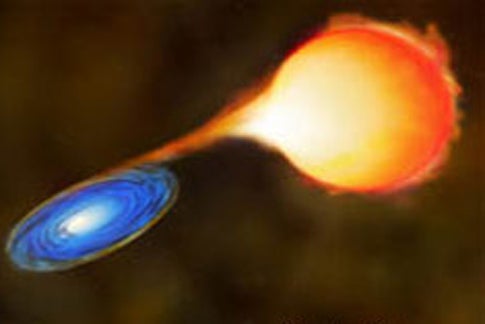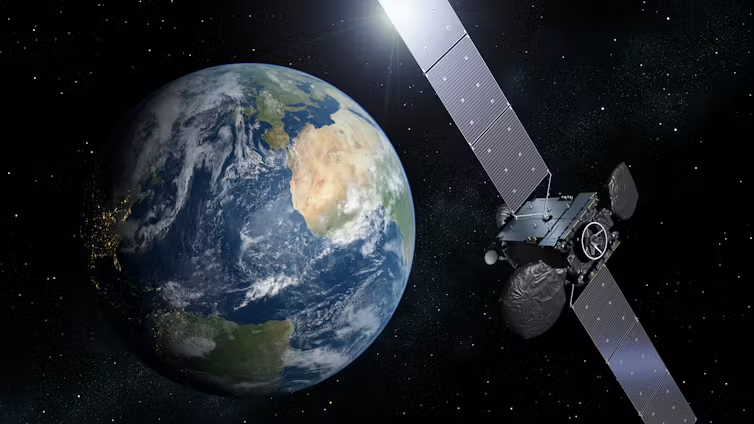Astronomers generally assume that the dusty disks where planets form are found around young stars in stellar nurseries. Now, for the first time, a protoplanetary disk has been found in the environment of a dying star.
A team of astronomers reported at the winter meeting of the American Astronomical Society that material from the dying star Mira A is being captured into a disk around Mira B, its companion. Michael Ireland of the California Institute of Technology and his coauthors, John Monnier from the University of Michigan, Peter Tuthill from the University of Sydney, and Richard Cohen from the W. M. Keck Observatory, say that the finding implies that there should be many similar undiscovered systems in the solar neighborhood, providing a myriad of new places to look for young extrasolar planets.
Located 350 light-years away in the constellation of Cetus, Mira (christened the “miracle star”) first shook the foundations of the astronomy world 400 years ago with its changing brightness. Visible to the naked eye for about one month at a time, it becomes 1,000 times fainter and disappears from view, only to reappear again on an 11-month cycle.
“When looking at one of the most celebrated and well-studied stars in the galaxy, I was amazed to find something new and unexpected,” says Ireland. “The discovery not only changes the way we think about a star that’s important historically, but also how we’ll look at similar stars in the future.”
Although Mira was once a star very similar to the sun, it is now in its death throes as it loses its dusty outer layers at a rate of one Earth-mass every seven years. If Mira were a single star, all this material would travel into outer space. However, like two out of every three star systems, Mira has a companion star that orbits around it, in this case with a period of about 1,000 years. This companion, Mira B, has a gravitational field that catches nearly one percent of the material lost from Mira A.
By using specialized high-contrast techniques at the 10-meter Keck I telescope in Hawaii and the 8-meter Gemini South telescope in Chile, Ireland’s team discovered heat radiation coming not only from Mira B itself, but also from a location offset from Mira B by a distance equivalent to Saturn’s orbit.
“Observing Mira in the infrared is like staring straight down the barrel of one of the brightest searchlights in the galaxy. It came as a real revelation to see this faint mote of dust, harboring all the possibilities of new worlds in formation, against the hostile environment of the Red Giant,” says Tuthill.
Monnier agrees, saying “Our new imaging method at Keck is revealing new details that were thought to be impossible to detect due to the blurring by atmospheric turbulence. In this case, the ‘detail’ we discovered is potentially a whole new class of planetary system in formation.”
The intense radiation from Mira A, 5,000 times brighter than the sun, heats the edge of the disk to about Earth’s temperature and causes it to glow in the infrared. The researchers were able to show that the material was indeed the edge of a disk and not just a “clump” in the wind from Mira A. By modeling the way that this system captures the outflow from Mira A, the researchers were also able to confirm that Mira B is simply an ordinary star like the sun, although about half as massive.
The key part of this result is what will happen when Mira A finishes its death throes and becomes a white dwarf in about one million years. The disk-creating process will have finished and the disk itself will be capable of forming new planets.
“This discovery opens up a new way to search for young planets, by searching in double star systems that contain white dwarfs,” Ireland says. “The expected abundance of these systems means that we can find planets that we know are young around stars like our sun.”
Astronomers associate the death of a star with the death of its planetary system. Here, the opposite is happening. Ireland adds, “An aging star is laying the foundation for a new generation of planets.”










